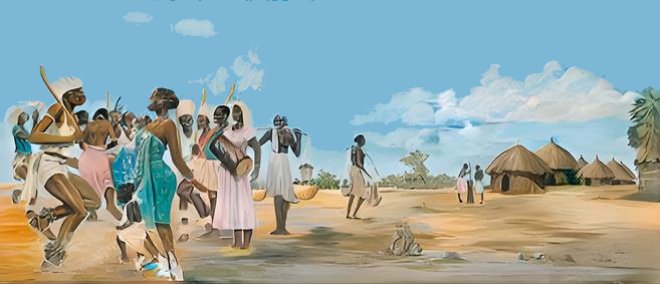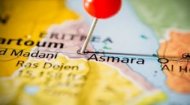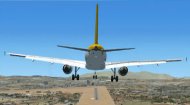|
Asmara Profile |
Asmara Profile |
Asmara Profile | Asmara Profile |
|
 |

|
In that year a federal act was passed in the nascent United Nations, binding Eritrea to Ethiopia as an autonomous region, despite the fact that this did not at all reflect the will of the people, and Asmara relinquished its title as a capital, subsequently sinking slowly into provinciality in the years that followed. This reflected the fact that Haile Selassie, then Emperor of Ethiopia, stated his country "is interested in the country and not in the people of Eritrea". Following a brutal thirty-year war of independence which ended in 1991 when the Eritrean People's Liberation Front (EPLF) defeated Ethiopian forces and captured Asmara, Eritrea formally gained independence in 1993 with Asmara restored to its capital city status. Asmara today is the heartland of the Tigrinya people, the largest ethnic group in Eritrea, but also home to individuals from all nine of the country's recognised ethnic groups. This diversity is most visibly reflected in its religious harmony. Within a few city blocks can be found the Enda Mariam Orthodox Cathedral, the Catholic Cathedral of Our Lady of the Rosary, and the Al Khulafa Al Rashiudin Grand Mosque, their respective spires and minarets co-existing peacefully on the skyline. This tolerance is a cornerstone of the city's social fabric. While Tigrinya is the de facto national language, the echoes of history are heard in the smattering of Italian words that pepper conversations and the formal use of Arabic in certain contexts. Economically, Asmara functions as the undisputed nerve centre of Eritrea. As the seat of government, it is the country's primary administrative hub, and most national industries and commercial enterprises are headquartered there. The nation's economy is largely state-controlled, with key sectors in Asmara including light manufacturing including textiles and footwear, food processing, and the service industry. However, the city's economic profile is marked by significant challenges. Decades of international sanctions, a policy of national self-reliance, and the constraints of a command economy have limited foreign investment and stifled growth. Remittances from the large Eritrean diaspora are a crucial lifeline, providing essential support to families and the broader economy. Despite these hurdles, Asmara’s commercial life continues, driven by small businesses, and in markets like Medebar, where artisans ingeniously recycle materials with a spirit of making do with what is available. Daily life in Asmara unfolds at a distinctly unhurried pace, evoking a sense of stepping back in time. The most prominent feature of the city's daily rhythm is its deeply ingrained coffee culture. Cafes and bars, many retaining their original mid-century decor, line the main boulevards. Mornings and afternoons are punctuated by the ritual of sipping macchiatos and conversing with friends. In the early evening, the city comes alive with the passeggiata, an Italian tradition of a leisurely stroll where residents dress in their finest to see and be seen along Harnet Avenue, the city's central artery. The streets are famously clean and safe, and the traffic is a nostalgic parade of vintage Fiat and Lancia cars alongside more modern vehicles and an abundance of cyclists. This slow, deliberate pace of life fosters a strong sense of community, where personal connections are paramount. For a visitor, Asmara itself is the main attraction as the city's architectural ensemble is its greatest treasure. A walk through its streets reveals masterpieces like the Fiat Tagliero Building, a futurist service station shaped like an airplane with massive, unsupported concrete wings. Other highlights include the Art Deco Cinema Impero, with its perfectly preserved interiors, the grand Asmara Opera House, and the rationalist lines of the former Governor's Palace. Beyond the buildings, the Tank Graveyard on the city's outskirts offers a reminder of the long war for independence, with its towering piles of rusted military hardware. Despite its unique charm and immense potential, Asmara faces a complex set of challenges. The political and economic isolation of Eritrea has limited the resources available for the upkeep of its architectural treasures, and many buildings are in need of restoration. Youth emigration remains a significant social issue, draining the country of its next generation. Looking forward, the city's UNESCO designation presents a significant opportunity. It has the potential to attract cultural tourism, which could provide a much-needed economic boost and the funds for preservation. The key challenge will be to manage this potential development in a way that protects Asmara's unique character, balancing the need for modernisation with the duty to preserve its irreplaceable heritage. Asmara can best be reached through Asmara Airport just a mile from the city, however the more adventurous might want to travel there using the Eritrean Railway that was constructed during the Italian colony era and was built between 1887 and 1932 to connect the Port of Massawa with Asmara. Sadly the forty-five mile Asmara-Massawa Cableway, which was the longest of its kind in the world when opened in 1937, was dismanted by the British in 1941 during the Second World War, having previously been used by the Italians to move food and war materials to replenish the Imperial Italian Army during its war with Ethiopia. For further insights, check out the Asmara profile video (above) then make a virtual landing at the airport (above.) |








